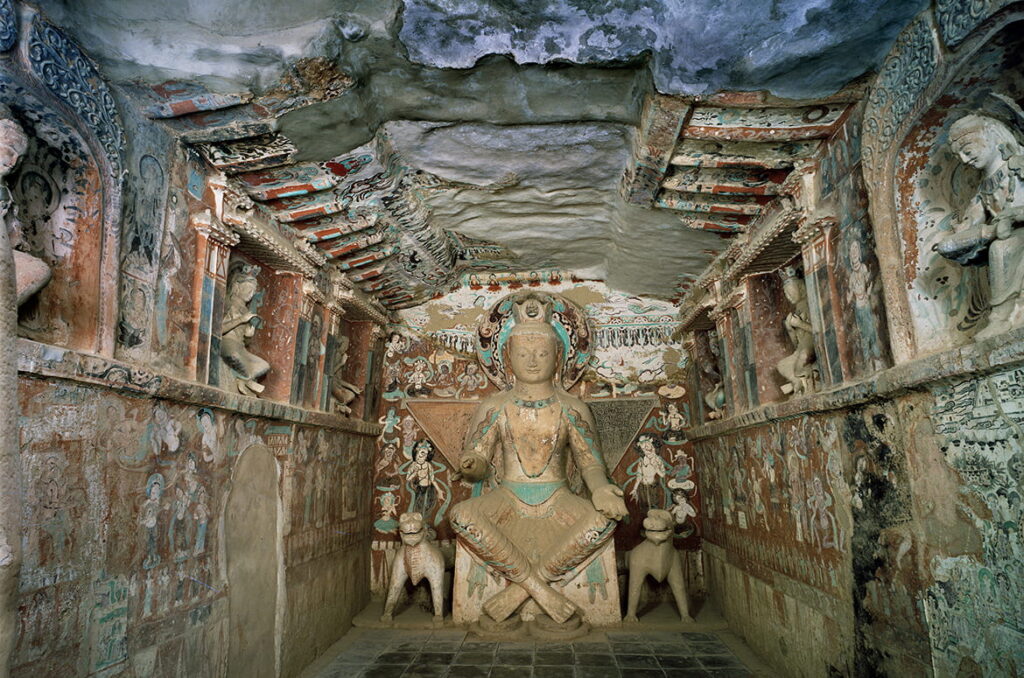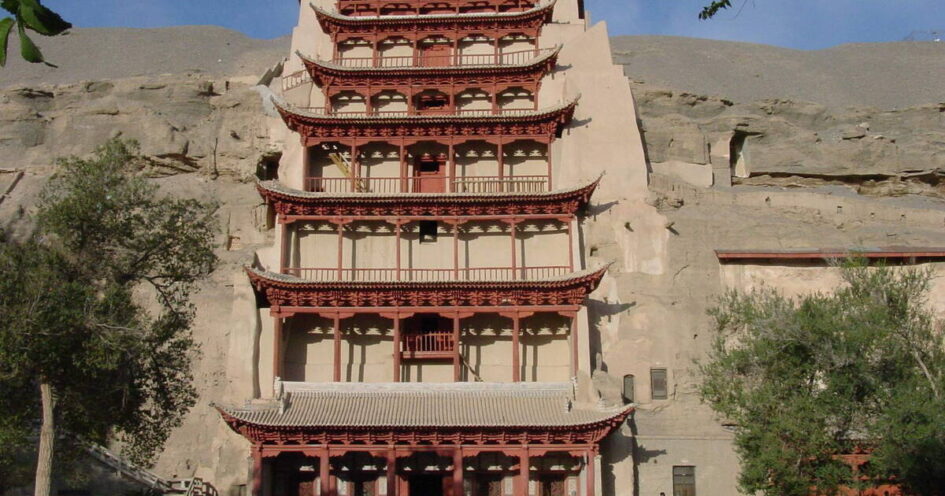On the edge of the desert in northwestern China, the Mogao Caves in Dunhuang have stood quietly for thousands of years. They are not only the site of dazzling Buddhist murals and Silk Road exchanges, but also a ‘corridor of national memory’ for Chinese civilisation. However, this cultural heritage is now facing an unprecedented threat from climate change. On the edge of the desert in northwest China, the Mogao Caves in Dunhuang have stood quietly for thousands of years. Not only are they home to brilliant Buddhist murals and Silk Road exchanges, they are also a ‘corridor of national memory’ for Chinese civilisation. However, this cultural heritage is now facing an unprecedented threat from climate change.
The Cultural and Memory Value of Mogao Caves
From the 4th century AD, Dunhuang was an important point in the eastward spread of Buddhism. Monks, merchants, and craftsmen carved caves into the loess cliffs, painting the walls with flying skies and sutra changes, and hiding traces of faith and life among the statues. These caves not only recorded the crossroads of Chinese and Western cultures, but also served as the physical carriers of local beliefs and national spirituality.

But once these murals are peeled off, not only the art but also the memory of the nation will be lost.
Climate change, accelerating the ‘mural catastrophe.’
- Rising temperatures: In recent years, the average annual temperature in the Dunhuang area has been rising, and the temperature difference between day and night is drastic, which makes the salts in the rock walls constantly crystallise and flake off, triggering blistering, chalking and even peeling off of the frescoes.
- Relative humidity fluctuations: Dramatic changes in humidity brought about by climatic anomalies can lead to cycles of expansion and contraction of the sediment structure, destabilising the grotto structure.
- Increased frequency of sand and dust storms: drought has degraded the surrounding vegetation and increased wind and sand erosion, causing direct wear and tear on facades and cave entrances.
Although scientific and technological means such as digital scanning and humidity control systems have been put into use, the protection of the Mogao Caves cannot rely solely on the museums or research institutes. What is more essential is for everyone to realise that the destinty of cultural heritage is closely related to the individual action.
The first is to promote low-carbon tourism models. The tourism operators could limit total footprint and direct off-peak visits to reduce carbon footprints and internal temperature changes in caves.
The second is to focus on public education and communication. Incorporating ‘Mogao caves and climate change’ into school curricula or social media platforms raises awareness among the younger generation about the environmental vulnerability of cultural heritage.
Conclusion
The Mogao Caves are not grottoes sleeping for thousands of years, but a cultural body that is still ‘alive’. It is like us, need a stable environment, the right ‘climate’ to maintain health. If we don’t act in time, we may only be able to look back at its splendour on the screen in the future.



Leave a Reply